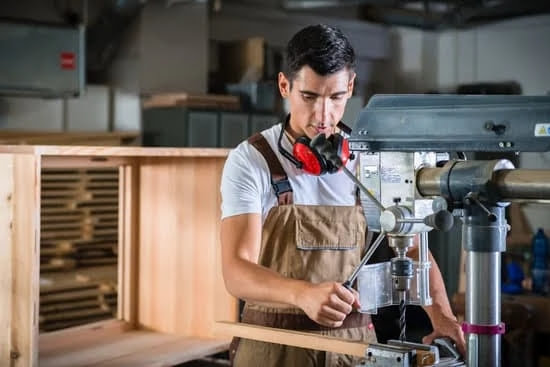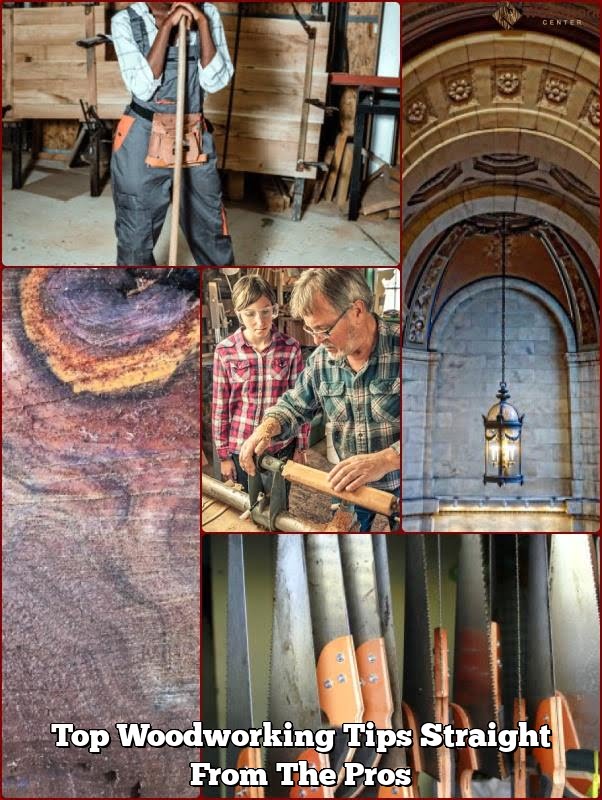Woodworking is a craft that requires precision and attention to detail, making the choice of tools essential for successful projects. One important tool in a woodworker’s arsenal is a straight blade, which plays a crucial role in shaping and smoothing wood surfaces. In this article, we will delve into the world of straight blades for woodworking and explore what makes them indispensable for woodworking enthusiasts.
So, what is a straight blade for woodworking? A straight blade is a cutting tool used to shave and shape wood surfaces with accuracy and finesse. It is designed to create smooth finishes and precise cuts, making it an essential tool for various woodworking tasks. Whether you are looking to flatten rough surfaces or refine edges, a straight blade can help achieve professional results in your projects.
There are different types of straight blades available for woodworking, each serving specific purposes. From bench planes to jointer planes, these tools come in various shapes and sizes to meet the diverse needs of woodworkers.
Understanding the different types of straight blades and their functions can help you choose the right tool for your woodworking projects. Join us as we explore the types of straight blades, materials used in their construction, how to choose the right one, maintain them properly, avoid common mistakes, prioritize safety measures when using them, and even tackle advanced techniques that can elevate your woodworking skills to new heights.
Types of Straight Blades
When it comes to woodworking, having the right tools for the job is essential. Straight blades play a crucial role in achieving smooth finishes and accurate cuts in woodworking projects. But what exactly is a straight blade for woodworking? A straight blade is a type of cutting tool typically made of steel that is designed to be attached to a plane or other woodworking tool to trim, shape, and smooth wood surfaces.
One of the most common types of straight blades used in woodworking are bench planes. Bench planes are versatile tools that come in various sizes and are used for different tasks such as smoothing, flattening, and leveling wood surfaces.
Jack planes, on the other hand, are slightly shorter than bench planes and are ideal for rough shaping and removing material quickly. Jointer planes are longer than both bench and jack planes and are specifically used for creating straight edges on boards or joining surfaces together seamlessly.
Different types of straight blades offer woodworkers a range of options depending on the specific task at hand. Choosing the right type of straight blade can make a significant difference in the quality and efficiency of your woodworking projects. Whether you’re looking to achieve fine details with intricate designs or simply need to flatten a rough surface, selecting the appropriate type of straight blade will help you achieve your desired results effectively.
| Straight Blade Type | Primary Use |
|---|---|
| Bench Plane | Smoothing, flattening, leveling |
| Jack Plane | Rough shaping, material removal |
| Jointer Plane | Straight edge creation, surface joining |
Materials Used in Straight Blades
Straight blades, also known as plane irons, are vital components in woodworking tools. These blades come in different materials, each with its own set of characteristics that can affect cutting performance. The choice of material for a straight blade can impact the sharpness, durability, and overall quality of the woodworking project.
Types of Materials
One common material used in making straight blades is high carbon steel. High carbon steel blades are known for their ability to hold a sharp edge for a longer period. They are also relatively easy to sharpen compared to other materials. Another popular choice is tool steel, which offers excellent durability and edge retention. Some woodworkers also opt for blades made from laminated or composite materials, which combine the best properties of different metals for superior performance.
Impact on Cutting Performance
The material of the straight blade plays a significant role in its cutting performance. Blades made from high carbon steel tend to have a smoother cutting action and are more forgiving when it comes to sharpening.
On the other hand, tool steel blades are preferred for heavy-duty tasks that require sustained sharpness over long periods. The choice of material should be based on the specific woodworking project at hand, taking into consideration factors such as wood type and desired finish.
Considerations for Woodworkers
When selecting a straight blade for woodworking projects, woodworkers should carefully consider the material used in its construction. Understanding the properties and characteristics of different blade materials can help in choosing the right blade for the task at hand.
It’s essential to assess factors such as ease of sharpening, edge retention, and overall cutting performance when deciding on the most suitable material for a straight blade. Proper maintenance and care will also contribute to prolonging the life and effectiveness of the blade in woodworking endeavors.
Choosing the Right Straight Blade
When it comes to woodworking, choosing the right straight blade is crucial for achieving precision and efficiency in your projects. But what exactly is a straight blade for woodworking? A straight blade, also known as a hand plane iron, is a cutting tool that is used to smooth, shape, or flatten wood surfaces. It typically consists of a sharp blade attached to a plane body that allows woodworkers to remove thin shavings of wood.
There are various factors to consider when selecting the appropriate straight blade for different woodworking tasks. One important aspect is the size of the blade, which can range from smaller bench planes for fine detail work to larger jointer planes for flattening large surfaces. The shape of the blade also plays a role in its functionality, with some blades designed with curvature to tackle specific tasks such as creating decorative edges or smoothing curves.
Another key consideration when choosing a straight blade is the blade angle, which can affect the cutting performance and finish of your woodworking project. Blades with higher angles are better suited for end-grain and figured woods, while lower angles are ideal for smoothing tasks on softer woods. By understanding how size, shape, and blade angle impact the cutting process, woodworkers can make informed decisions on selecting the right straight blade for each task.
| Straight Blade Factor | Impact on Woodworking |
|---|---|
| Size | Determines the type of woodworking task the blade is suitable for |
| Shape | Affects the functionality of the blade in terms of shaping and smoothing wood |
| Blade Angle | Influences cutting performance based on wood type and desired finish |
By carefully considering these tips and factors when choosing a straight blade for woodworking tasks, craftsmen can enhance their craftsmanship and achieve professional results in their projects. Experimenting with different blades and techniques can also help expand one’s skills and creativity in woodworking. Remember that investing in high-quality straight blades and maintaining them properly through regular sharpening will ultimately lead to improved woodworking outcomes and overall satisfaction in your craft.
Maintaining Straight Blades
Understanding the Importance of Maintaining Straight Blades
Maintaining straight blades is essential in woodworking to ensure consistent and precise cuts. Over time, the blade can become dull due to regular use, nicks, or improper storage. A sharp blade not only improves cutting efficiency but also enhances the overall quality of your woodworking projects. It is crucial to regularly inspect and maintain your straight blades to achieve the best results.
Proper Maintenance Techniques
One of the key aspects of maintaining straight blades is sharpening them when needed. To sharpen a straight blade, you can use various tools such as sharpening stones, honing guides, or even power sharpeners. It is important to follow the correct sharpening angle and technique specific to your type of blade for optimal results. In addition to sharpening, proper storage of your straight blades is also crucial. Storing blades in a dry and clean environment will prevent rust and damage.
Tips for Prolonging Blade Longevity
In order to prolong the longevity of your straight blades, it is important to follow some simple tips. Avoid using excessive force when cutting with a straight blade as it can lead to premature dullness or damage.
Additionally, regularly cleaning your blades after each use can help prevent build-up of debris or resin that can affect cutting performance. By taking care of your straight blades through proper maintenance and following these tips, you can ensure they will last for many woodworking projects to come.
Common Mistakes to Avoid
Woodworking with straight blades can be a rewarding and fulfilling experience, but it is important to avoid common mistakes that can hinder your progress and potentially affect the quality of your work. Here are some key mistakes to watch out for when using straight blades in woodworking:
- Incorrect Blade Installation: One common mistake that woodworkers make is not properly installing the straight blade in the tool. This can lead to uneven cuts, tear-out, and even accidents. Ensure that the blade is securely tightened and aligned with the tool to prevent any mishaps.
- Using Dull Blades: Another mistake that many woodworkers make is trying to work with dull blades. Dull blades not only produce poor results but also require more effort and force, increasing the risk of injury. Regularly sharpen your blades or replace them when necessary to maintain optimal cutting performance.
- Ignoring Grain Direction: Wood has a natural grain direction that affects how it should be cut and worked with. Ignoring the grain direction when using straight blades can result in splintering, tear-out, and rough finishes. Always pay attention to the grain direction to achieve clean and smooth cuts.
To prevent these common mistakes when working with straight blades in woodworking:
- Follow proper installation instructions provided by the manufacturer
- Regularly sharpen or replace dull blades for optimal cutting performance
- Always take note of the direction of the wood grain before making any cuts
By avoiding these common mistakes and following best practices when using straight blades, you can enhance your woodworking skills and create beautiful projects with precision and finesse. Remember that safety should always be a top priority when working with sharp tools, so take extra precautions and enjoy the craft of woodworking responsibly.
Straight Blade Safety
Woodworking can be a rewarding and fulfilling hobby, but it also comes with its own set of risks, especially when using sharp tools like straight blades. Safety should always be the top priority when working with straight blades to prevent accidents and injuries. Here are some important safety measures to keep in mind:
- Always wear appropriate personal protective equipment (PPE) such as safety goggles, gloves, and ear protection to protect yourself from flying wood chips, dust, and loud noises.
- Ensure that your work area is well-lit and free from clutter to avoid tripping hazards or accidents caused by poor visibility.
- When handling straight blades, always keep your hands behind the cutting edge and never place them in front of the blade to prevent accidental cuts or lacerations.
In addition to these general safety precautions, it’s important to follow specific guidelines for using different types of straight blades. For example, when using bench planes or jack planes, make sure that the blade is securely fastened in place before starting any woodworking tasks. Similarly, when using jointer planes for smoothing surfaces or flattening edges, always make sure that the blade is properly adjusted and sharpened to avoid any mishaps.
Remember that accidents can happen even to experienced woodworkers, so it’s crucial to always stay focused and alert while working with straight blades. By following proper safety measures and taking necessary precautions, you can enjoy woodworking safely and prevent any unnecessary injuries.
Advanced Techniques With Straight Blades
In conclusion, the straight blade is an essential tool in woodworking, allowing craftsmen to create intricate designs and achieve smooth finishes on their projects. Understanding the different types of straight blades available, such as bench planes, jack planes, and jointer planes, is crucial in selecting the right tool for the job at hand.
Furthermore, knowing the materials used in crafting straight blades and how they impact cutting performance can help woodworkers make informed decisions when investing in their tools. Proper maintenance and sharpening of straight blades are also key in ensuring optimal performance and longevity of the blade.
Lastly, it is important to practice safety measures when working with straight blades to avoid accidents and injuries. By avoiding common mistakes and following best practices in using straight blades, woodworkers can explore advanced techniques to elevate their craft and take their woodworking projects to new levels of sophistication and quality. Whether it’s creating intricate designs or achieving smooth finishes, the straight blade remains a versatile tool in the hands of skilled craftsmen.
Frequently Asked Questions
What Is a Straight Saw Blade?
A straight saw blade is a type of blade that has a flat, straight edge without any curves or angles. It is designed for making precise, straight cuts in materials such as wood, metal, or plastic.
What Is the Difference Between a Straight and Curved Saw Blade?
The main difference between a straight and curved saw blade lies in their cutting capabilities. While a straight saw blade is ideal for making straight cuts, a curved saw blade is better suited for making curved or intricate cuts. Curved blades are more flexible and can maneuver around corners more easily than straight blades.
What Are the Three Types of Saw Blades?
There are three main types of saw blades: rip-cut blades, crosscut blades, and combination blades. Rip-cut blades are designed for cutting along the grain of the material and have fewer teeth with larger gullets to remove material quickly.
Crosscut blades have more teeth and are better suited for cutting across the grain of the material to produce smoother edges. Combination blades, as the name suggests, combine elements of both rip-cut and crosscut blades to provide versatility in cutting different types of materials efficiently.

Hi everyone! I’m a woodworker and blogger, and this is my woodworking blog. In my blog, I share tips and tricks for woodworkers of all skill levels, as well as project ideas that you can try yourself.





